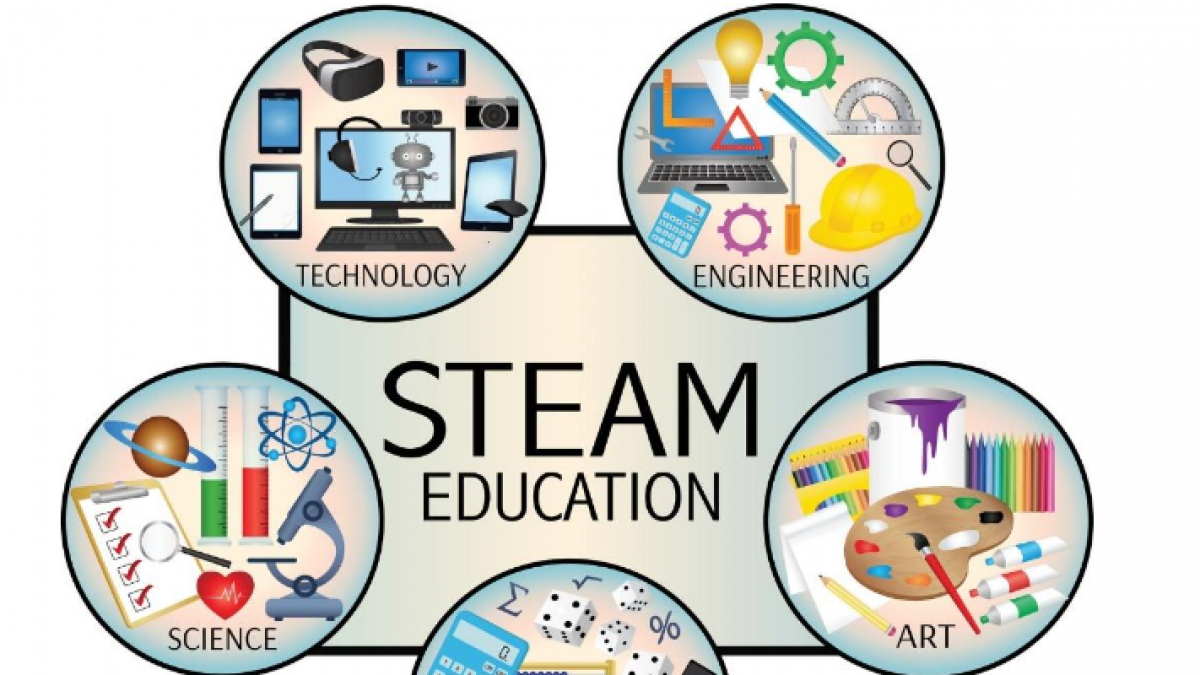
International Montessori Conference And Events
Pioneering The Future Of Education
STEAM Education

STEM stands for Science, Technology, Engineering, and Mathematics. It is an interdisciplinary approach to learning.
STEAM Education
STEM stands for Science, Technology, Engineering, and Mathematics. It is an interdisciplinary approach to learning that combines these subjects to solve real-world problems.
STEAM is similar to STEM, but it also includes the Arts. The Arts are added to STEM to encourage creativity and design thinking, which are important skills for STEAM education has become an increasingly popular approach to teaching in recent years. STEAM stands for Science, Technology, Engineering, Arts, and Mathematics, and it integrates these subjects into a cohesive curriculum that emphasizes creativity, problem-solving, and hands-on learning. STEAM education is designed to prepare students for the demands of the 21st-century workforce, where skills like critical thinking, collaboration, and innovation are highly valued.
STEM education can support a child's educational path in several ways. It provides students with critical thinking and problem-solving skills, as well as the ability to work collaboratively in teams. These skills are highly valued by employers and can help students find job opportunities after graduation. STEM also encourages innovation and creativity, which can lead to the development of new products and technologies that impact society positively.
If you're a teacher or a parent who wants to incorporate more STEAM education into your classroom or daily life, here are some tips to get started:
For schools:
1. Start small: Introduce STEAM concepts gradually, and build on them as students become more comfortable with the material. You can begin by incorporating simple STEAM activities into your existing curriculum, such as building a bridge out of popsicle sticks or designing a simple circuit.
2. Collaborate with other teachers: STEAM education is multidisciplinary by nature, so it's important to work with other teachers to develop cross-curricular projects that incorporate various subjects. For example, you could work with the art teacher to create a project that combines science and design.
3. Use technology: Technology is a crucial component of STEAM education, so make sure to incorporate it into your lessons. There are many free online resources available, such as coding tutorials and virtual experiments, that can help you introduce technology to your students.
4. Emphasize creativity: One of the key benefits of STEAM education is that it encourages creativity and innovation. Encourage your students to think outside the box and come up with their own solutions to problems.
For parents:
1. Look for STEAM opportunities in your community: Many museums, science centers, and libraries offer STEAM programs and activities for children. Look for opportunities to attend these events with your child, or sign up for a STEAM summer camp.
2. Incorporate STEAM into everyday activities: You don't need to be an expert to incorporate STEAM into your child's daily life. For example, you could have your child help you measure ingredients while cooking, or encourage them to build a tower out of blocks.
3. Use STEAM toys and games: There are many toys and games available that incorporate STEAM concepts, such as building sets, coding games, and science kits. These can be a fun and engaging way to introduce your child to STEAM concepts.
4. Encourage curiosity: Above all, encourage your child's curiosity and creativity. Ask them questions, encourage them to explore, and let them know that it's okay to make mistakes and learn from them.
By incorporating STEAM education into the classroom and daily life, we can help prepare children for the challenges and opportunities of the future.
There is no specific age when parents should start teaching their children about STEAM. However, it is recommended to introduce STEAM concepts early on, as young children have a natural curiosity and love for exploration. Parents can begin by using everyday objects to teach basic concepts like counting, measurement, and shapes. As children grow older, parents can introduce more complex topics like coding, robotics, and physics.
To support their child's STEM education, parents can look for local STEM programs, camps, and workshops that offer hands-on learning experiences. They can also encourage their child to explore STEM subjects through books, games, and online resources. Additionally, parents can connect their child with STEM professionals and role models to inspire and motivate them in their educational journey.
Categories: : STEAM
 Heba Torad
Heba Torad 




